- Survey background / Survey overview / Basic attributes of samples
- Chapter 1. Development of Children's Learning Attitude (This article)
- Chapter 2. Parents' Involvement in Children's Learning
- Chapter 3. Essential Factors to Cultivate Learning
- Comments on the Survey Report on Home Education from Early Childhood to First Grade in Elementary School
Preparing for Schooling, Sorted by Grade
The development of daily habits and attitudes of learning to learn in early childhood varies among individuals. Among the questions asked below, some items only got 60-70% affirmative responses by the guardians of children aged 5 years (K3). On the other hand, the ability to learn the Japanese hiragana syllabary, numbers and develop logical thinking was found to gradually develop along with age, with 80-90% of the guardians of children aged 5 years responding positively.
Q. Are any of the following statements true for your child?Figure 1-1: Daily habits (K1 to first grade)
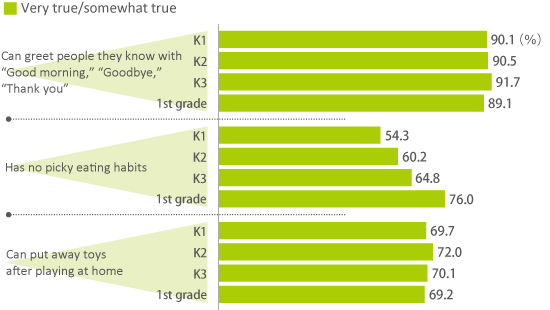
Figure 1-2: Attitudes of learning to learn (K1 to first grade)
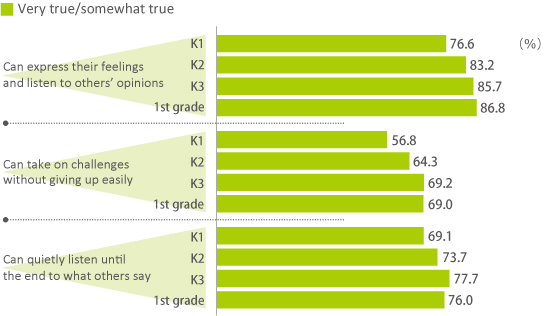
Figure 1-3: Hiragana/Numeracy/Logical Thinking (K1 to K3)
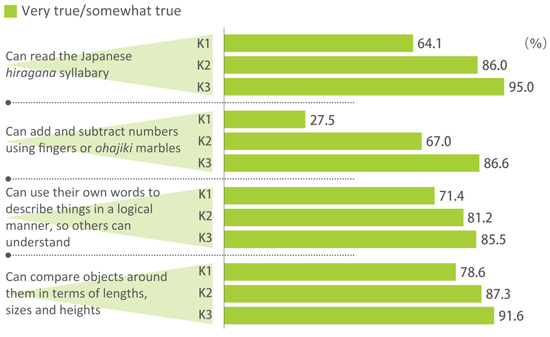
Figure 1-1 shows the percentage of children's abilities in their daily habits. 91.7% of the K3 children could greet or thank others. However, children who "have no picky eating habits" scored 64.8%, and those who could "put away toys after playing at home" scored 70.1%. This shows that some children still have picky eating habits, and have difficulty cleaning up when they enter elementary school.
Figure 1-3 collates the data regarding hiragana/numeracy/logical thinking. Items such as "can read the hiragana syllabary" or "can add and subtract numbers using fingers or ohajiki marbles" show an increase of 30% in the period from K1 to K3. However, the percentage of children who could accomplish tasks such as "can take on challenges without giving up easily" in Figure 1-2, or questions regarding logical thinking such as "can use their own words to describe things in a logical manner, so others can understand" or "Can compare objects around them in terms of lengths, sizes and heights" only showed a gradual increase when comparing K1 and K3 children, meaning that such abilities develop in smaller steps (percentages are all calculated from the "Very true" "Somewhat true" answers).
Comments from the Research Group--Important Aspects in Early Childhood
What are the important aspects to be nurtured in early childhood? From the aspect of preparing for elementary school education, this includes more than simply reading and writing, which is often discussed. Being able to take care of oneself is a large pre-condition. Basic literacy and numeracy are also important factors. Being able to structure words into meaningful sentences, or being able to compare lengths and heights are also necessary. In addition, being able to listen to others, give their own opinions and statements, being able to focus on tasks, asking "why" and being able to ask questions, are things that we recently found out that are important for children's learning. Logical thinking and attitudes of learning to learn, in particular, can be developed in any situation in everyday life. It is obvious that rather than any special training, responding sincerely to children's actions in every aspect of everyday life is the right road to take with child rearing.
Preparing for Schooling by Age in Months
Focusing on the children's age in months, expressing their feelings and listening to others' opinions drops to a large extent from K3 to first grade children.
*Comparison by age in months: The children's ages by months were determined as of January 2012, and the percentage of responses answering "very true" was calculated by age.
Figure 1-4: Attitudes of learning to learn: Can express their feelings and listen to others' opinions
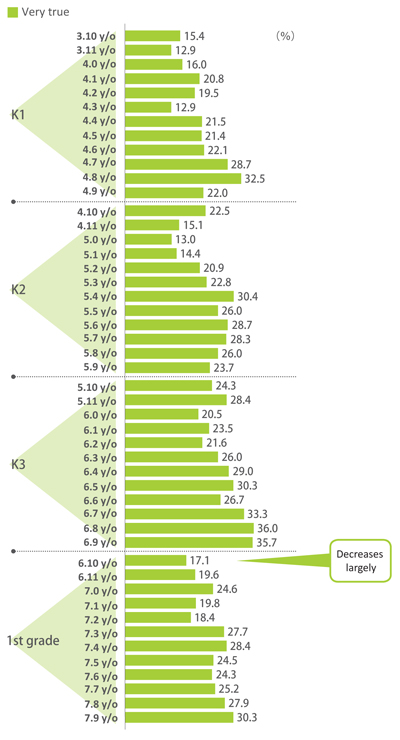
Figure 1-4 shows that among the children of the same grade, the proportion of children who can express their feelings and listen to others' opinions tends to increase according to their age in months, but the proportion shows a decrease when comparing K3 to first graders. This may be due to the time lag involved in adapting to their new learning and living environment as there is a marked difference between kindergartens/day-care centers/ECEC centers and elementary schools. In addition, the figure shows that among the children of the same grade, younger children experience greater stress when having to adapt to new environments.
Likewise, regarding hiragana/numeracy/logical thinking, the proportion gradually increased according to age in months (figure omitted). It seems that the process of developing these attitudes is supported by the children's wide variety of experiences in daily life or the activities at kindergartens day-care centers/ECEC centers.
Home Study of First Graders
The top answer for the amount of home study of first graders was "around 30 minutes". More than 90% of the children did their school homework or prepared for the next day of school. Around 60% of the children could immediately start studying after sitting down at their desks, or were able to stay focused until the end.
Q. How long does your child study at home during weekdays?Figure 1-5: Amount of home study on weekdays (first grade)
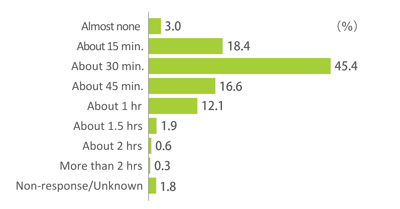
Q. Are any of the following statements true for your child?
Figure 1-6: About home study (first grade)
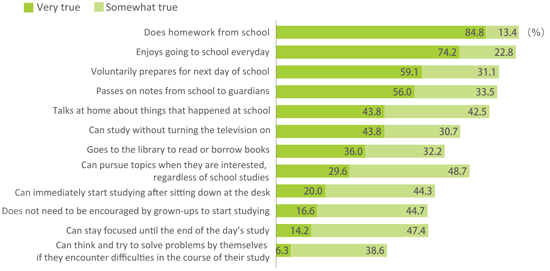
As figure 1-6 shows, the questions mostly answered "very true" in descending order were: "Does homework from school" at 84.8%, "Enjoys going to school everyday" at 74.2%, "Voluntarily prepares for next day of school" at 59.1%, "Passes on notes from school to guardians" at 56.0%, "Talks at home about things that happened at school" at 43.8%. The top five questions were directly related to school. Then, questions related to out-of-school study such as "Goes to the library to read or borrow books" or "Can pursue topics when they are interested, regardless of school studies" followed, and questions regarding learning attitudes came after them. The result shows how home studying is directly connected to studies at school and is then further developed after that.














